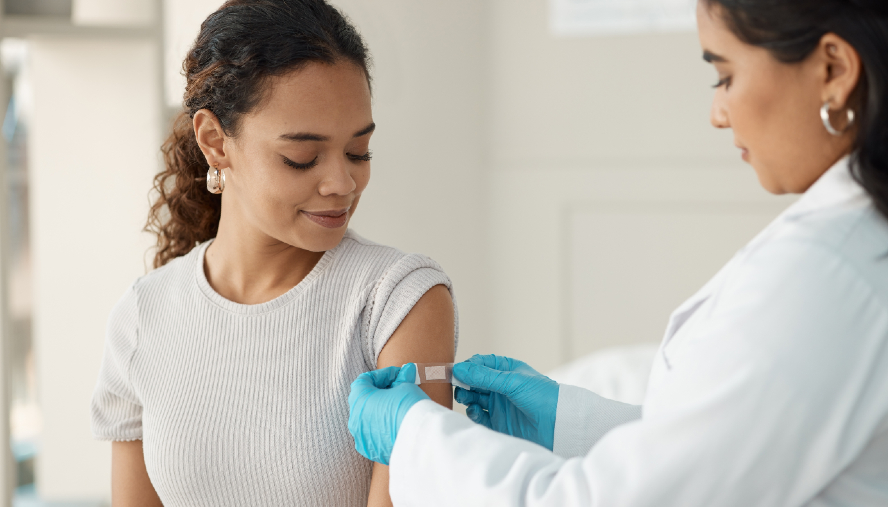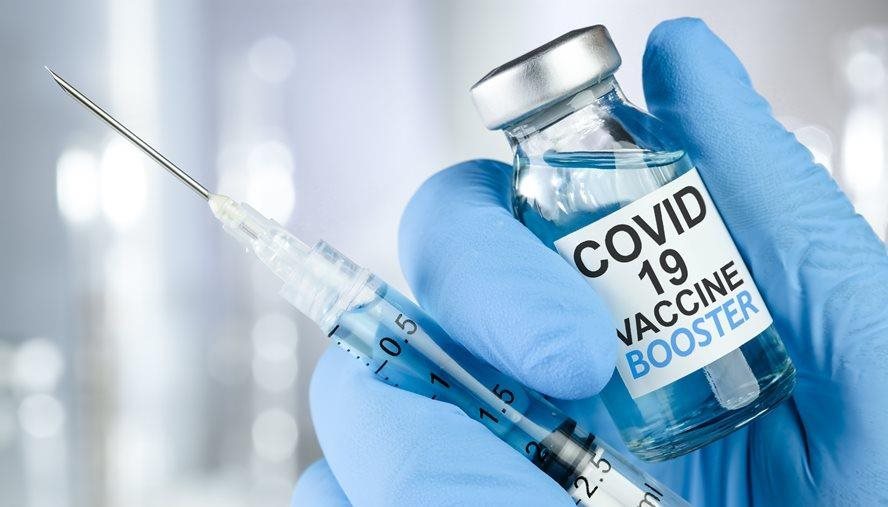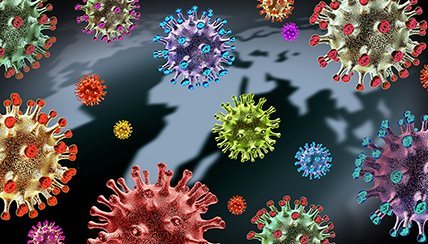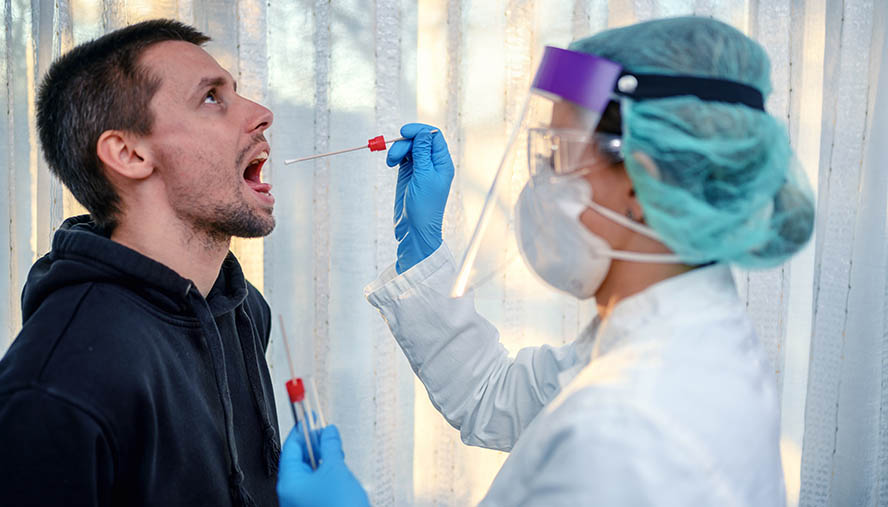 A Series of Articles on the Science Behind COVID-19
A Series of Articles on the Science Behind COVID-19
COVID-19 Vaccine Development
By: Ahmad M. Rashid, MD, pulmonary and critical care physician, National Jewish Health
December 9, 2020
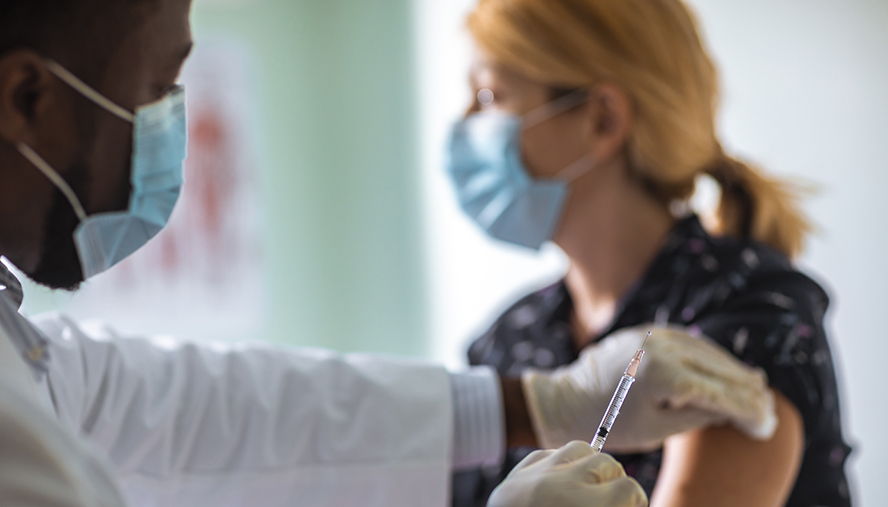
Ever since the emergence of COVID-19 in January 2020, labs around the world have been looking to develop effective vaccines against SARS-COV-2, the virus that causes COVID-19. As of Dec. 8, more than 68 million people have developed COVID-19 and 1.5 million have died. In normal times, vaccines take years to decades to develop. Given the extent of the coronavirus disease, and the severe social economic impact it has caused, governments and private institutions around the globe have poured unprecedented amount of effort and money into vaccine development.
To create a vaccine for COVID-19, scientists first need to identify a “target,” also known as an antigenon the SARS CoV-2 virus. This target is a protein found on the surface of the virus. A vaccine introduces this antigen safely into the body through a variety of methods. The immune system recognizes this foreign material, neutralizes it and stores the "memory" of the antigen. If SARS-CoV-2 later infects a vaccinated person, the immune system can quickly mount an overwhelming response and eliminate the virus before it has a chance to cause severe disease. For SARS-CoV-2, the most commonly used antigen is a protein called the spike, or S protein, which the virus uses to enter and infect cells.
Over the last century, scientist have come up with several clever ways to give our immune systems a “whiff” of various infections. These delivery systems are what differentiate about 60 or so vaccines currently under development for COVID-19.
Types of Vaccines
There are other novel types of vaccines been studied, but the ones described below are the most successful methods to date.
The mRNA Vaccines
The two of the three first vaccines to report positive results from phase trials are mRNA vaccines, developed by Pfizer/BioNTech and Moderna.
A successful mRNA vaccine has never been deployed before, although work was ongoing to develop mRNA vaccines for HIV and even cancer. Consequently, we do not have long-term data about safety of such vaccines. So far, the clinical trials and lab testing have indicated that these vaccines are safe.
Messenger RNA, also known as mRNA, delivers instructions from genes encoded in DNA to protein-making factories inside cells. To make an RNA vaccine, scientists take a tiny snippet of the viral mRNA that codes for the S protein, but not any of the harmful proteins that make the virus dangerous, make millions of copies of in laboratories and inject them into humans. This mRNA penetrates human cells and, using the cells’ machinery, makes the viral S protein. The immune system recognizes the S protein as “foreign,” mounts a brief attack against any cells bearing it, then retains “memory" of this viral protein so it can go into action instantly if it encounters the real virus.
Inactivated/Live Attenuated Virus Vaccines
This is a tried and trusted method of virus vaccine development. Scientists take a large volume of actual virus-and kill it using chemical or physical methods to make it inactivated. Scientists can also take the infectious “sting” out of the virus for a live attenuated (weakened) vaccine. When these “dummy” viruses are injected into a human body, once again the immune system revs into action and forms a memory to fight any later “real” viruses.
The influenza vaccine that you get every year is most of the time an “inactivated virus vaccine.” The polio vaccine is an example of “live attenuated vaccine.” Currently large trials have shown success for these types of vaccine made by the Chinese company Sinovac and Wuhan Institute of Biologic research.
Vector Vaccines
This vaccine takes a “harmless” non-infecting virus, or made one in the lab, and “infuses” it with a potential target protein to create a “vector” virus. Injecting this vector virus into human body tricks the immune system into thinking that it is facing a real infection and causes an immune response to be generated and stored for future reference. Currently there are no vector-based human vaccines, although these products have been used successfully in veterinary practice for years.
Several firms around the world are using this strategy, most commonly using a hybrid adenovirus as the vector. An example is the Oxford University/Astra Zeneca product, CHAD OX1. It was the first COVID-19 vaccine to enter large phase 3 trials and is one of the first three candidate vaccines to report success in phase 3 trials.
Making A Vaccine Successful and Safe
In order to be approved for human use a vaccine must pass through various staged trials:
- Preclinical trials: The potential vaccine is used on animals to make sure it is safe to use.
- Phase 1 trials: The potential vaccine is used on a small number of healthy volunteers to determine adequate dose and look at safety.
- Phase 2 trials: More human volunteers get the vaccine and blood tests are done to make sure that vaccine is inducing actual immunity in people.
- Phase 3 trials: A large group of humans get the vaccine and there is a “placebo” group. Both groups are studied to see if there is a difference between the disease rates in the vaccine group vs. the placebo groups. Vaccines can be approved by the U.S. Food and Drug Administration after Phase III trials indicate effectiveness and safety.
- Phase 4 trials: Scientists continue to study the safety and efficacy after large scale population vaccination has begun.
So far, the Pfizer/BioNTech and Moderna vaccines have completed phase 3 trials, and preliminary data should soon be available to review. Chinese vaccines and the vector vaccines are in the final stages of phase 3 trials-with encouraging results.
Bottom Line
It is very likely that there will soon be effective and safe vaccines available for this deadly virus. However, as the old saying goes, vaccines do not end pandemics, vaccination does! The vaccine will not be effective if people do not get vaccinated. A safe and effective vaccine has been available for polio for decades now, but the disease still ravages children in some parts of the world due to health system problems, vaccine misinformation, gaps in vaccination coverage and poor sanitary conditions.
It will be a herculean task to make the vaccine readily available around the globe in an equitable system of distribution AND to ensure that any fears about safety are addressed in a transparent manner. Success rates and safety will need to be monitored carefully. The good news is that the health care system looks like it is ready to take on this task and deliver on the promise of a safe, effective and universally available vaccine.
| The information on our website is medically reviewed and accurate at the time of publication. Due to the changing nature of the COVID-19 pandemic, information may have since changed. CDC.gov and your state’s health department may offer additional guidance. |

